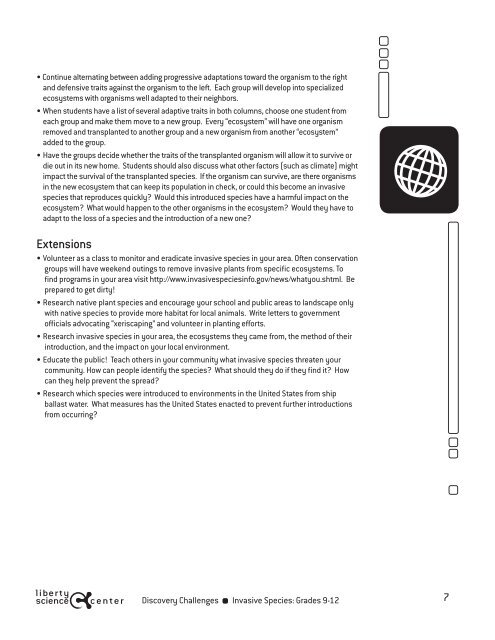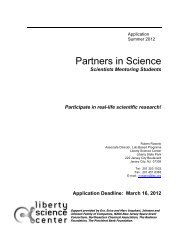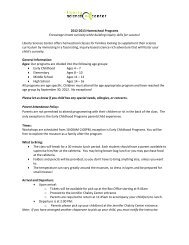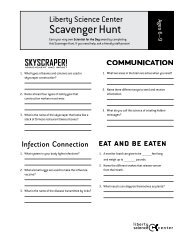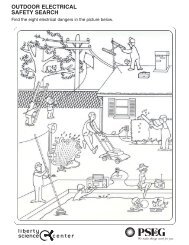Invasive Species- What's the worst that could happen? – Grades 9-12
Invasive Species- What's the worst that could happen? – Grades 9-12
Invasive Species- What's the worst that could happen? – Grades 9-12
Create successful ePaper yourself
Turn your PDF publications into a flip-book with our unique Google optimized e-Paper software.
• Continue alternating between adding progressive adaptations toward <strong>the</strong> organism to <strong>the</strong> right<br />
and defensive traits against <strong>the</strong> organism to <strong>the</strong> left. Each group will develop into specialized<br />
ecosystems with organisms well adapted to <strong>the</strong>ir neighbors.<br />
• When students have a list of several adaptive traits in both columns, choose one student from<br />
each group and make <strong>the</strong>m move to a new group. Every “ecosystem” will have one organism<br />
removed and transplanted to ano<strong>the</strong>r group and a new organism from ano<strong>the</strong>r “ecosystem”<br />
added to <strong>the</strong> group.<br />
• Have <strong>the</strong> groups decide whe<strong>the</strong>r <strong>the</strong> traits of <strong>the</strong> transplanted organism will allow it to survive or<br />
die out in its new home. Students should also discuss what o<strong>the</strong>r factors (such as climate) might<br />
impact <strong>the</strong> survival of <strong>the</strong> transplanted species. If <strong>the</strong> organism can survive, are <strong>the</strong>re organisms<br />
in <strong>the</strong> new ecosystem <strong>that</strong> can keep its population in check, or <strong>could</strong> this become an invasive<br />
species <strong>that</strong> reproduces quickly? Would this introduced species have a harmful impact on <strong>the</strong><br />
ecosystem? What would <strong>happen</strong> to <strong>the</strong> o<strong>the</strong>r organisms in <strong>the</strong> ecosystem? Would <strong>the</strong>y have to<br />
adapt to <strong>the</strong> loss of a species and <strong>the</strong> introduction of a new one?<br />
Extensions<br />
• Volunteer as a class to monitor and eradicate invasive species in your area. Often conservation<br />
groups will have weekend outings to remove invasive plants from specific ecosystems. To<br />
find programs in your area visit http://www.invasivespeciesinfo.gov/news/whatyou.shtml. Be<br />
prepared to get dirty!<br />
• Research native plant species and encourage your school and public areas to landscape only<br />
with native species to provide more habitat for local animals. Write letters to government<br />
officials advocating “xeriscaping” and volunteer in planting efforts.<br />
• Research invasive species in your area, <strong>the</strong> ecosystems <strong>the</strong>y came from, <strong>the</strong> method of <strong>the</strong>ir<br />
introduction, and <strong>the</strong> impact on your local environment.<br />
• Educate <strong>the</strong> public! Teach o<strong>the</strong>rs in your community what invasive species threaten your<br />
community. How can people identify <strong>the</strong> species? What should <strong>the</strong>y do if <strong>the</strong>y find it? How<br />
can <strong>the</strong>y help prevent <strong>the</strong> spread?<br />
• Research which species were introduced to environments in <strong>the</strong> United States from ship<br />
ballast water. What measures has <strong>the</strong> United States enacted to prevent fur<strong>the</strong>r introductions<br />
from occurring?<br />
Discovery Challenges <strong>Invasive</strong> <strong>Species</strong>: <strong>Grades</strong> 9-<strong>12</strong> 7


